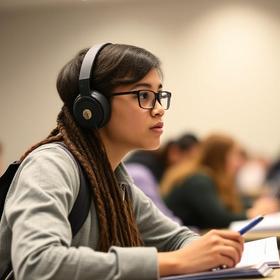Though some still think that community colleges are somehow less legitimate than traditional colleges and universities, the fact remains that community colleges provide opportunities for students who might not otherwise find the right fit. With reduced tuition costs and flexible class schedules, community college is ideally suited to non-traditional students, including single parents, slightly older adults, and students for whom English is a second language.
Though community colleges fill an essential niche in the American hierarchy of education, statistics show that enrollment numbers are falling at an alarming rate. Between 2016 and 2017 alone, enrollment dropped by nearly 2% nationwide. Furthermore, a survey of college and university admissions directors completed by Inside Higher Ed revealed that 84% of community colleges have declined enrollment over the past two years.
Community colleges are forced to adapt to declining enrollments and new political challenges. Read on to learn how community colleges are changing strategies to boost enrollment.
Why Is Enrollment in Decline?
In 2018, the National Student Clearinghouse Research Center surveyed community college enrollment to evaluate recent declines. The survey revealed a decline of 1.8%, or 275,000 students, compared to the previous spring. This marks the seventh straight year that community college enrollment has declined in the United States.
According to the survey, enrollment was down in 34 states. Six of the ten largest states on that list were located in the Northeast or Midwestern United States. After looking at these declining student populations, the center found that the number of adult students (aged 24 or older) has decreased by more than 1.5 million over the past decade while the number of traditional-aged students has increased, but only slightly (about 0.4%). Even so, total enrollment for younger students was slightly below the average from two years prior.
Statistics like these are certainly concerning, but numbers can only tell part of the story. Scott Jaschik, reporting for Inside Higher Ed, spoke to several community college admissions directors regarding the decline – here are some of the factors thought to be impacting enrollment:
- Employment opportunities for people without college degrees or certificates have improved, including skilled professions such as electricians and computer support specialists.
- Cuts in state funding have affected community colleges more severely than their private and for-profit four-year counterparts.
- Increased pressure to produce measurable outcomes affects funding and accreditation for both community and traditional colleges.
- The number of high school graduates in the United States is at a standstill and projected to decline dramatically by 0.5 million after 2025 – this is partially due to lower birth rates during the Great Recession.
- As the economy has improved since the Great Recession, more adult students are leaving school and returning to the workforce.
What is important to remember is that it is more than just the number of students enrolled that has an impact on community colleges. There is also a great deal of pressure on community colleges from state and federal legislators to improve graduation and completion rates and increase the number of students who transfer to four-year institutions. Christina Hubbard, director of strategic research at EAB, comments that community colleges will be expected to “deliver the same level or more in liberal arts and workforce training, but with less money.”
To delve further into financial issues affecting community colleges, the 2012 policy change in the Pell Grant program lowered the required income threshold for the federal financial assistance program, decreasing the number of low-income students who would automatically qualify for aid.
Seeing the Other Side of the Issue
While numbers are declining in current populations of community college students, both traditional and non-traditional, they are climbing in other areas. For example, students from underserved and minority communities are enrolling in community colleges at higher rates.
Here are some statistics from the American Academy of Community Colleges (AACC) to demonstrate this trend:
- The percentage of Hispanic first-time college students doubled between 2001 and 2016.
- The percentage of black first-time college students has remained steady at that same time.
- The percentage of white first-time college students has declined by 17%.
There has also been a steep increase in students under 18. It is estimated that the number of students aged 17 or younger enrolled in community college classes has increased from just 163,000 to nearly 750,000 in the past two decades. Kent Phillipe, the associate vice president of research and student access at AACC, suggests that many come from high school dual enrollment programs.
Though increased enrollment is a good thing, most colleges do not receive any funding support for dual enrollment students. The other problem is that most of these dual-enrolled students don’t go on to attend community college after graduation—they attend four-year universities.
What Are Community Colleges Doing About It?
During the Great Recession, community colleges and traditional universities faced the challenge of recruiting new students when money was tight across the nation. Both Hubbard and Phillipe suggest that the latest focus for these schools should be shifted to retaining the students who have already chosen to go to college after high school.
According to Hubbard, over 50% of students leave school before matriculation. Out of 100 students who applied to a two-year school, over 50% were lost during onboarding, nearly 25% had dropped out, and only 5% were still enrolled after six years. Of those 100 students, only 9 were seen to complete an associate degree, and just 7 finished a bachelor’s degree.
Hudson Valley Community College in New York has taken its program beyond U.S. borders to stabilize enrollment and keep faculty employed. Earlier this year, the college announced that it would offer academic programs to students in Central America and the Caribbean. Unlike many schools that recruit international students, HVCC will offer courses and faculty in the countries where these students live instead of bringing those students to the United States.
Roger Ramsammy, president of HVCC, suggests that “with community colleges, everybody does what everybody else is doing.” He wants to “make sure Hudson Valley is not among the competition but that [they’re] out there and [they’re] different.”
Other community colleges have noticed what HVCC is doing and have started to follow suit. Broward College in Florida has opened education centers in Brazil, Bolivia, Ecuador, China, and several other countries. David More, executive director of international education at Broward College, says that “the whole idea is for students who want to get an American education. They can stay at home, study in our program, get an American community college degree, and then go to American universities.”
Palm Beach State College has taken a different approach.
President Ava Parker said enrollment growth at PBSC has become a campus-wide priority. With state funding in decline, Parker says increasing enrollment by just 1% brings in $500,000. Starting in 2015, Parker instituted a series of strategies to effect this change.
Here are some of the strategies PBSC has been using to increase enrollment:
- We targeted recruiting at specific high schools and students who started an application to the school but never completed it.
- Using institutional aid to help students get into the school and complete their degree (such as the Finish4Free program).
- Increasing customer service to potential students by outsourcing phone calls and financial aid verification during peak enrollment periods.
- Social media is used to keep in contact with students as they navigate the admission process and process all applications within 48 hours.
- Offering financial incentives for “stop-outs” to come back, including waiving the tuition for a course if the student maintains a 2.0 GPA or higher.
These efforts have paid off with a 6.6% enrollment increase since 2015. Parker intends to keep that trend moving up with future strategies for growth, including targeted recruiting for special populations, recruiting international students, and working with universities to guarantee admissions to online programs for PBSC students with associate degrees. Parker says she is “determined [PBSC] will not have enrollment controlled by the economy.”
The world of education is constantly changing as the nation continues to change. If community colleges hope to thrive, or even survive, these changes they will have to adapt. Schools like PBSC and HVCC have set the standard high, and more community colleges are likely to take a page from their books to set enrollment statistics for the rise in the coming years.
Questions? Contact us on Facebook. @communitycollegereview















